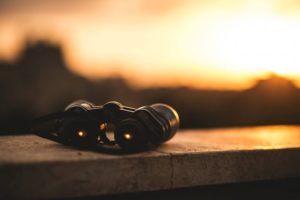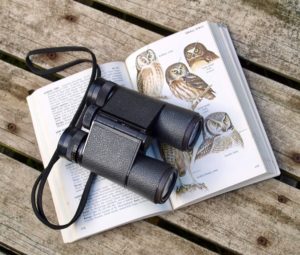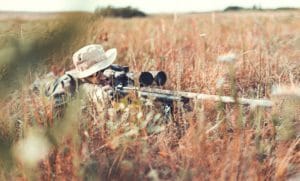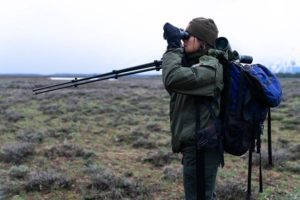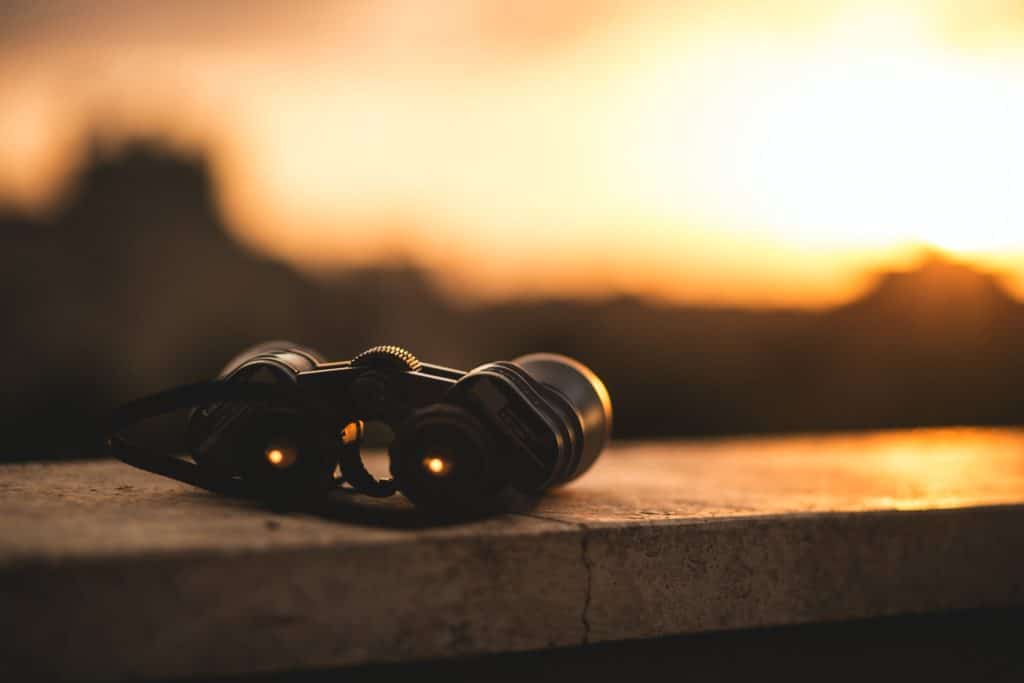Rangefinder binoculars practically combine two optical instruments in one device.
The first device, the binoculars, allows you to view objects at a distance. Additionally, the laser rangefinder is used for determining the exact distance between you and the subject in the field of view.
Rangefinder binoculars first broke into the market in 1992, introduced by a company called Leica. By 2000, they had also integrated this cutting-edge technology into monoculars.
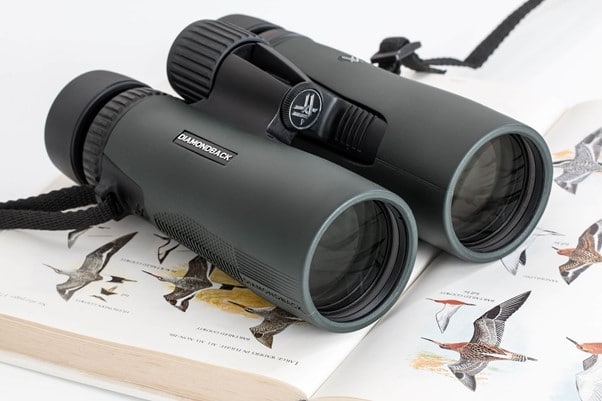
So, Rangefinder binoculars have been available for quite a bit of time. Still, their popularity has significantly increased over the past couple of years, and they’ve become essential tactical tools in hunting, archery, and warfare.
When choosing the best rangefinder binoculars, durability and optics come into play. In this guide, we break down several types of rangefinder binoculars’ factors to consider when choosing a pair and discuss why you should think about getting these precision instruments for the optimum experience.
Our top recommendation for the best rangefinder binoculars is Nikon Laserforce Rangefinder Binocular, but there should be an option for all in this full list of reviewed products:
- Nikon Laserforce Rangefinder Binocular — Best Overall
- Bushnell Fusion 1-Mile — Best Multi-Use Rangefinder Binoculars
- Leica Geovid HD-B 3000 Rangefinding Binocular — Best Rangefinder Binoculars for People With Glasses
- ZEISS 10×42 Victory Rangefinder Binocular — Best Tech Rangefinder Binoculars
- Steiner Laser Rangefinder Binoculars LRF 1700 — Best Waterproof Rangefinder Binoculars
- Swarovski EL 10×42 Rangefinder Binocular — Best Luxury Rangefinder Binoculars
- SIG Sauer KILO 3000 BDX Binocular Rangefinder — Best Compact Rangefinder Binoculars
What Is a Rangefinder?
A rangefinder is a device used to measure the distance between you and a target. Due to ever-evolving technology, modern rangefinders have replaced the more traditional varieties.
The laser beam released from the rangefinder bounces off the target. The rangefinder comes with a high-speed clock that measures the time it takes for the laser beam to get to the object and return and then accurately calculates the distance.
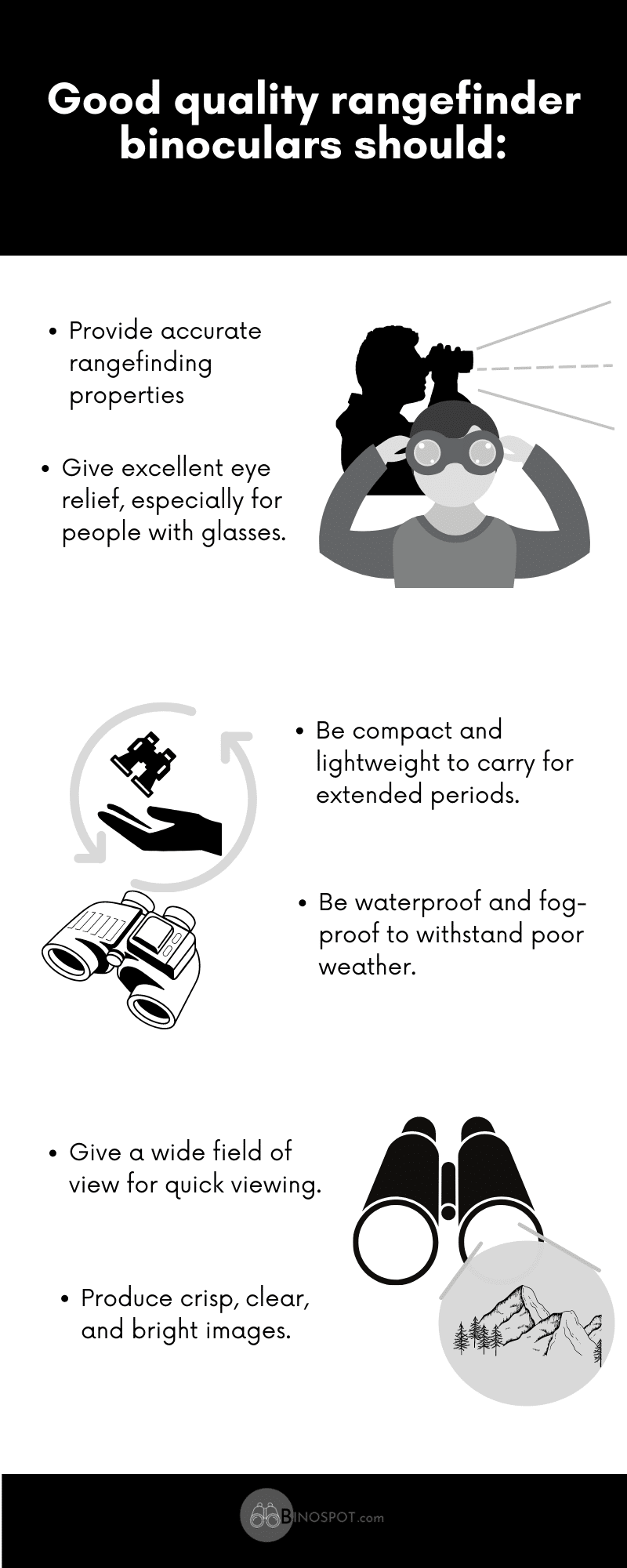
Why You Should Consider Getting Rangefinder Binoculars
Below are four significant reasons to get rangefinder binoculars, especially if you enjoy hunting.
Angle Compensation
As a hunter, the distance between you and the target is only one consideration. Viewing your target at eye level is different from viewing your target from a higher standpoint.
Rangefinder binoculars with angle compensation show how much distance you need to shave off your shot, which increases your accuracy by a significant degree. When hunting on steep terrain, rangefinders with angle compensation are essential.
Affordability
Though rangefinders are notorious for being expensive, this optical device does not have to be financially strenuous. Although there are numerous luxurious high-performance rangefinders in the market, there are also many simpler budget-friendly ones that can get the job done.
A budget of $100 – $250 should suffice for a simple, yet quality, pair of rangefinder binoculars. For about $450 – $900, you are assured of a sturdy, high-quality set that guarantees you excellent performance, distance readings, and clear and pristine images.
Reliable and Robust
Most rangefinder binoculars in the market come filled with nitrogen or argon-filled lenses that prevent the lenses from fogging. Many are waterproof and can withstand up to 8 meters of submersion in water.
Many also have a tough aluminum casing that can withstand falls from great heights and abuse from the environment without compromising the rangefinder’s functional and physical integrity.
Accuracy
Estimating the effect of gravity, angles of inclinations, and true distance while aiming and capturing your target can be rather tasking and reduces accuracy by a long shot. Small errors of about 15% make a significant difference between a true and missed shot.
Rangefinder binoculars can handle all the ‘unnecessary heavy lifting,’ leaving the hunter to line up their shot and take it with ease.
Convenience
Having to carry numerous weighty gadgets while in the field can be a nuisance for hunters. With the evolution of technology, rangefinder binoculars have become more intelligent and compact over time, just like cell phones. Some rangefinder binoculars are now so small and compact that they barely weigh half a pound.
The vertical design means you can pull them out, use them, and put them away with one hand in one swift motion. You can also attach the binoculars to a lanyard and place them around your neck, place them on your belt, or in your jacket.
This convenience is made possible because they use Porro prisms, which are designed to shorten the optical path i.e., they can correct an image’s orientation in a small space.
Factors to Consider While Choosing a Pair of Rangefinder Binoculars
How can I differentiate a quality pair of rangefinder binoculars from a cheap set? Below are the critical factors to consider before purchasing rangefinders.
Lens Coating
A lens coating is usually applied to the lens to reduce glare and reflections, which will affect your view of the target. The coating allows the lens’ optics to perform well under the ever-changing weather and different lighting conditions.
Here is a guide explaining the different options:
- Coated means that there is just one antireflective coating on either or both lenses.
- Fully-coated lenses mean that the coating is on the ocular and objective lenses and prism.
- Multi-coated means that there are multiple layers on either or both lenses.
- Fully multi-coated means that all surfaces have multiple coatings, giving the highest quality of rangefinder binoculars.
We recommend rangefinder binoculars with multi-coated or fully multi-coated lenses to capture more light, thus delivering crisp, clear views. It also ensures the colors are bright and vibrant by enhancing light transmission.
Additionally, they ensure sharpness by using coated prisms that help in reducing color fringing.
Maximum and Minimum Ranging Distance
Maximum range is the furthest distance you can see using rangefinder binoculars and is determined primarily by the amplitude of its rangefinder laser beam.
To boost your ranging distance, you have to increase your lens magnification. So, your choice of magnification is crucial to the final image seen. Additionally, if you wish to have a shorter ranging distance, you should go for a lens with lower magnification, which is usually best for birdwatching.

Design
When choosing rangefinder binoculars, the overall design is crucial for many reasons.
For starters, a change in the binocular design may affect the bulkiness or weight of the rangefinder. Considering the change in weight and size is vital as it determines whether users can use them for prolonged periods without risking fatigue.
A healthy balance between compactness and weight is ideal for a good pair of rangefinder binoculars to minimize the risk of them falling from your hands.
To improve the sturdiness of their binoculars without compromising on weight, manufacturers switched from heavy brass used in housing covers to silicon-coated aluminum. Doing this helped lower the chances of slipping significantly.
New age rangefinder binoculars are made of aluminum coated with silicon or leather-like material called gutta-percha. This material is more durable than leather and can withstand wear and tear longer. The layer of gutta-percha is then reinforced with a protective, flexible rubber coating to prevent damage through dropping.
Prism
Using low-quality prisms can significantly affect the quality and clarity of the image. As such, choosing a premium quality prism for your rangefinder makes all the difference in measuring the range.
There are two types of prism used: the Bak-4 and BK7. Bak-4 prisms are high-density glass and are highly considered better quality than BK7, so, understandably, cost a lot more.
When choosing rangefinder binoculars, especially for hunting, we recommend the Bak-4 because of its anti-reflective properties that produce clearer images—thanks to their ability to transmit more light than BK7 glass.
Field of View
The field of view simply refers to the width of the visible area as seen (from edge to edge) through the binoculars at minimum magnification. It is typically measured at a distance of 1000 yards.
A narrow field of view is caused by a higher magnification. It’s best to consider the field of view while choosing your preferred rangefinder binoculars, as this affects the scope you see.
Eye Relief
Eye relief refers to the distance between your eye and the eyepiece that allows you to see the whole field of view offered by your binoculars.
Hunters typically prefer rangefinder binoculars with a long eye relief of up to 18mm as this allows them to move the binoculars to and from their faces without realigning their eyes. This enables them to focus on a moving target and get a range fast.
Ballistic Configuration
Rangefinder binoculars with a ballistic configuration feature enable you to input and calculate data. This feature allows you to adjust the level of data provided to you and offers multiple modes to do so.
Variants such as temperature, pressure, and altitude can cause ballistic deviations with significant results at distant ranges. Using rangefinders with a ballistic configuration feature allows you to save time that you would otherwise use fumbling around with separate devices.
Weather Resistance
If you plan to use your rangefinder binoculars frequently, you’ll almost certainly find yourself in inclement weather, such as high humidity or rainstorms.
Ideally, your rangefinders should be Nitrogen or Argon filled and sealed with O-rings to prevent fogging of the lenses and to protect them from water damage. We recommend a pair designed with extreme weather resilience in mind so that you can easily navigate numerous weather situations.

Our Recommendations of the Best Rangefinder Binoculars
Nikon Laserforce Rangefinder Binocular — Best Overall
Nikon Laserforce is perfect for hunters who depend on a pair of rangefinders to get a view of distant animals before taking their shot. This pair offers a very bright display with a 4-step intensity adjustment and clear and detailed images. You can also use them in any lighting conditions.
The binoculars shut off after about 8 seconds of no use to save power. The advanced technology offers the horizontal distance to the object at view even at a steep incline and declines of up to a whopping 89 degrees.
The power and mode buttons on the binoculars are easy to spot due to the binoculars’ ergonomic design.
Nikon Laserforce provides bright images due to the reflective mirror coating on the mirror surface at the roof prisms. They also provide rich, high contrast images due to the pairs’ ED glass that provides high resolution because of its ability to correct chromatic aberration.
Pros:
- Durable and light.
- Waterproof and fog-proof.
- They provide bright images.
- The power and mode buttons are easy to spot, especially for beginners.
Cons:
- Users report that the internal display can be defective.
Bushnell Fusion 1-Mile — Best Multi-Use Rangefinder Binoculars
These binoculars with a rangefinder built-in can measure distances from 10 to 1760 yards and operate at the push of the button, making them very easy to use. You can use them for multiple activities such as birdwatching, traveling, hunting, watching outdoor sports, and even by the army.
This multipurpose rangefinder is made carefully with high-quality material. They incorporate the new XTR technology to facilitate light transmission and provide crisp imagery and excellent resolution.
The multi-coating is waterproof, protecting the binoculars from harsh conditions. The binoculars are easy to carry around for extended periods owing to their sturdy exterior and the quality of their lenses.
These 10×42 rangefinder binoculars provide eye relief of up to 18mm, ensuring your eyes are comfortable.
Pros:
- Great overall performance.
- Compact and lightweight.
- Excellent ballistic functionality.
- Eye relief of up to 18mm.
Cons:
- Can take a long time to display the range.
- Display can be too bright.
Leica Geovid HD-B 3000 Rangefinding Binocular — Best Rangefinder Binoculars for People With Glasses
Leica is the company that pioneered the first laser rangefinder binoculars, and the Geovid HD-B 3000 is the latest addition to their collection. They have outstanding optical quality with multi-coated glass that reduces light loss and produces clear and crisp images.
This is helped by the phase-corrected Perger Porro prisms and high-definition ED lenses. It is also important to note that the response time is a little slow; Leica claims an accurate range of about 3000 yards when it is actually nearer 800 yards.
Boasting a magnification of about 10×42, the binoculars offer a 20mm eye relief which allows you to position your eye at a comfortable distance.
This is perfect for eyeglass wearers as it helps prevent any chances of damage to the eyes. They also have a wide field of view of about 374 feet per 1000 yards, ideal for hunting.
Unfortunately, Leica Geovid HD-B 3000 is quite heavy and may seem challenging to carry over extended periods.
Pros:
- Eye relief of about 20mm.
- A wide field of view – 374 feet per 1000 yards.
- Crisp, clear images.
Cons:
- Pretty heavy for prolonged use.
ZEISS 10×42 Victory Rangefinder Binocular — Best Tech Rangefinder Binoculars
Carl Zeiss is a world-renowned brand with top-notch optics. These binoculars come with a real-time computer that comes with the ZEISS hunting app, so it is safe to say that this model did not skimp on the technological aspect at all.
ZEISS Victory Rangefinder boasts a maximum range of up to 2300 meters in the daytime. They come with quality lens caps and eyepiece protector caps which come in handy while protecting your device. They are also waterproof, a necessity against the wet, humid environment.
Although Zeiss Victory is one of the best hunting binoculars with a rangefinder, it is expensive due to the technology put into engineering and design.
Pros:
- Provide a range of up to 2300m.
- Incorporate high-end technology.
- Waterproof.
Cons:
- Bulky.
- Relatively expensive.
Steiner Laser Rangefinder Binoculars LRF 1700 — Best Waterproof Rangefinder Binoculars
The Streiner Laser Rangefinder Binoculars are waterproof and can withstand being fully submerged in water for short periods. They are also fog-proof as they are filled with Nitrogen gas, perfect for particularly humid days.
The rangefinder can measure 1860 yards meaning only a few objects out of its range can escape. They also focus automatically, so making adjustments should be the least of your worries.
The binoculars weigh about 3 pounds, which is pretty heavy. So if weight is a point of contention for you, you may have to consider going for a different set from our list.
The lens covers are unfortunately of poor quality as they occasionally pop off. As such, moisture can easily get in, risking smudge and lowering the quality of your images.
Pros:
- A decent range of up to 1860 yards.
- Autofocusing.
- Anti-fog and waterproof.
Cons:
- Relatively heavy.
- Low-quality lens covers.
Swarovski EL 10×42 Rangefinder Binocular — Best Luxury Rangefinder Binoculars
This pair has great lens castings and enhanced prisms, including but not limited to; Swardur, Swartop which guarantee excellent color production. The outer optical surfaces, with Swarclean, facilitate a non-stick effect.
Swarovski EL 10X42 Binoculars achieve great picture sharpness by using their range of field flattener lenses. They also have a non-slip solid, focusing wheel that is easy to use, even for beginners. They incorporate top-notch engineering in the design, making them super accurate during operation.
The binocular accessories such as the eyepiece protectors are manufactured from high-quality materials and blend into the design aesthetically. The EL series of rangefinder binoculars ensure an excellent viewing experience that also benefits eyeglass wearers.
Pros:
- Easy to hold.
- Sharp images.
- Great focusing mechanism.
- Ideal for people wearing glasses.
Cons:
- It is quite expensive
SIG Sauer KILO 3000 BDX Binocular Rangefinder — Best Compact Rangefinder Binoculars
SIG Sauer binoculars are half the price of the Zeiss Victory. But despite the significantly lower price point, they offer bright, clear images, high-speed range readings, and Bluetooth connectivity. This model also has a slightly more powerful laser than the Zeiss Victory.
While the manufacturer reviews indicate that the rangefinder can estimate distances of up to 3000 yards, the binoculars achieve a range of up to 5000 yards for reflective targets and slightly beyond 2800 yards for non-reflective targets—quite impressive for such small kit.
SIG Sauer Rangefinder Binoculars work with the BDX system, recently named one of the best advances in recent shooting technologies. They’ll make an excellent addition if you already own a SIG Sauer Riflescope.
Pros:
- Small and compact.
- Maximum range of 5000 yards.
- Bright and clear images.
- Great value for money.
Cons:
- They are not sturdy.
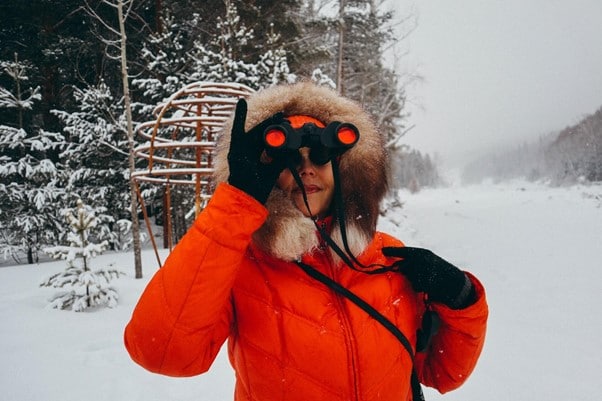
Frequently Asked Questions
Why Can’t My Rangefinder Binoculars Pick Up Further Distances?
When this happens, it’s typically because your rangefinder binoculars might have succumbed to a harsh impact; thus, the unit becomes misaligned. The best approach is to contact the manufacturer’s service center.
Can I Use My Rangefinder Binoculars for Casual Use?
Yes, you can. However, rangefinder binoculars are expensive and come with complex features beneficial to hunting. We would suggest using regular binoculars instead.
Are Swarovski Rangefinder Binoculars Worth the Money?
Swarovski rangefinder binoculars are pretty costly, with their least expensive binoculars retailing at $829, thanks to the high-quality materials used.
Regarding image quality, Swarovski rangefinder binoculars do not outperform many cheaper alternatives. It is important to note that Swarovski is a luxury brand so the name costs extra! We recommend browsing other brands and models to get value for a tight budget.
Are ED Glass Rangefinder Binoculars Better than Standard BAK-4 Rangefinder Binoculars?
There is no stark difference in the images produced by the respective rangefinder binoculars. The main difference is that ED glass has less chromatic aberration than BAK-4 binoculars, and that’s why they are slightly more expensive.
In Summary
Rangefinder binoculars have become essential in hunting, birdwatching, or, more casually, watching a sports game.
Our top recommendation is the Nikon Laserforce Rangefinder Binoculars because of the undisputable great quality they offer. They are also relatively light and durable due to their aluminum-alloy construction. They are additionally cheaper than their competitors, so you are guaranteed your money’s worth.
The Bushnell Fusion 1-Mile ARC is our runner-up that can go up to a range of 1760 yards with a great eye relief of about 18mm that can be used for many activities. For a compact pair of rangefinder binoculars, we recommend the SIG Sauer KILO 3000 BDX, which has a great range of up to 5000 yards for a very affordable price.
They are followed closely by the Swarovski EL 10×42 Rangefinder Binoculars, which may be somewhat expensive. However, they achieve excellent picture sharpness and guarantee excellent color production due to their innovative optical design.







